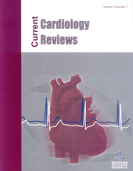Abstract
Percutaneous Coronary Intervention (PCI) of Chronic Total Occlusions (CTO) represents the most challenging procedure in modern endovascular treatments. In recent years, the success rate of CTO PCI has substantially improved, owing to increasing operator expertise and advancements in CTO equipment and algorithms as well as the development of expert consensus documents. In this review, we summarize existing evidence for CTO PCI, its success/ risk prediction scoring tools, procedural principles and complications and provide an insight into the future role of CTO PCI.
Keywords: Chronic total occlusion, percutaneous coronary intervention, coronary artery disease, morbidity, mortality, risk.
[http://dx.doi.org/10.1161/CIRCULATIONAHA.104.481283] [PMID: 16216980]
[http://dx.doi.org/10.1016/j.jacc.2011.12.007] [PMID: 22402070]
[http://dx.doi.org/10.1002/ccd.25264] [PMID: 24142769]
[http://dx.doi.org/10.1093/eurheartj/ehr471] [PMID: 22240495]
[http://dx.doi.org/10.1161/CIRCULATIONAHA.119.039797] [PMID: 31356129]
[http://dx.doi.org/10.1093/eurheartj/ehl270] [PMID: 17003048]
[http://dx.doi.org/10.1002/ccd.25001] [PMID: 23703867]
[http://dx.doi.org/10.1016/j.ijcard.2012.09.086] [PMID: 23058348]
[http://dx.doi.org/10.1016/j.jacc.2014.04.040] [PMID: 25034057]
[http://dx.doi.org/10.1161/JAHA.117.008415] [PMID: 29654206]
[http://dx.doi.org/10.1016/j.ijcard.2018.03.042] [PMID: 29885694]
[http://dx.doi.org/10.1161/CIRCINTERVENTIONS.117.006229] [PMID: 30354635]
[http://dx.doi.org/10.1002/ccd.28614] [PMID: 31797507]
[http://dx.doi.org/10.1016/j.jacc.2019.08.1049] [PMID: 31699280]
[http://dx.doi.org/10.1016/j.carrev.2020.10.007] [PMID: 33127297]
[http://dx.doi.org/10.1016/j.jacc.2016.08.034] [PMID: 27788851]
[http://dx.doi.org/10.1136/heartjnl-2015-308891] [PMID: 27164918]
[http://dx.doi.org/10.1016/j.jcin.2017.05.065] [PMID: 28797429]
[http://dx.doi.org/10.1002/ccd.10641] [PMID: 14571489]
[http://dx.doi.org/10.1016/j.jcin.2007.11.003] [PMID: 19393143]
[http://dx.doi.org/10.1097/MCA.0000000000000138] [PMID: 25009975]
[http://dx.doi.org/10.1016/j.jelectrocard.2018.07.012] [PMID: 30177338]
[http://dx.doi.org/10.1161/CIRCOUTCOMES.108.825760] [PMID: 20388873]
[http://dx.doi.org/10.1016/j.ahj.2010.04.015] [PMID: 20598990]
[http://dx.doi.org/10.1002/ccd.26934] [PMID: 28318134]
[http://dx.doi.org/10.1016/j.jcin.2017.10.052] [PMID: 29550088]
[http://dx.doi.org/10.1093/eurheartj/ehv450] [PMID: 26333367]
[http://dx.doi.org/10.1016/j.jcin.2015.11.016] [PMID: 26947387]
[http://dx.doi.org/10.1016/j.jcin.2014.10.010] [PMID: 25700750]
[http://dx.doi.org/10.1016/j.jacc.2016.07.744] [PMID: 27712774]
[http://dx.doi.org/10.1186/s12968-017-0369-z] [PMID: 28724418]
[http://dx.doi.org/10.1136/heartjnl-2017-312698] [PMID: 29463612]
[http://dx.doi.org/10.1093/eurheartj/ehy220] [PMID: 29722796]
[http://dx.doi.org/10.1016/j.jcin.2018.04.017] [PMID: 29976368]
[http://dx.doi.org/10.1016/j.jcin.2018.05.041] [PMID: 30219327]
[http://dx.doi.org/10.1161/CIRCULATIONAHA.118.031313] [PMID: 30813758]
[http://dx.doi.org/10.1093/eurheartj/ehy394] [PMID: 30165437]
[http://dx.doi.org/10.1016/0197-2456(86)90046-2] [PMID: 3802833]
[http://dx.doi.org/10.1016/j.jcin.2010.09.024] [PMID: 21349461]
[http://dx.doi.org/10.1161/CIRCINTERVENTIONS.114.002171] [PMID: 26162857]
[http://dx.doi.org/10.4244/EIJV11I9A202] [PMID: 26788703]
[http://dx.doi.org/10.1016/j.jcin.2014.07.031] [PMID: 25700748]
[http://dx.doi.org/10.1161/JAHA.116.004272] [PMID: 27729332]
[http://dx.doi.org/10.1161/CIRCIMAGING.116.005800] [PMID: 28389507]
[http://dx.doi.org/10.1016/j.ijcard.2014.11.133] [PMID: 25438216]
[http://dx.doi.org/10.1016/j.jcin.2017.03.016] [PMID: 28595879]
[http://dx.doi.org/10.1016/j.jcin.2015.09.022] [PMID: 26762904]
[http://dx.doi.org/10.1002/ccd.27092] [PMID: 28471074]
[http://dx.doi.org/10.1016/j.jcin.2016.01.036] [PMID: 27085580]
[http://dx.doi.org/10.1016/j.jcin.2015.07.009] [PMID: 26493246]
[http://dx.doi.org/10.1016/j.jcin.2018.11.020] [PMID: 30711551]
[http://dx.doi.org/10.1161/CIRCINTERVENTIONS.117.005255] [PMID: 28851720]
[http://dx.doi.org/10.1016/j.jcin.2016.11.055] [PMID: 28385401]
[http://dx.doi.org/10.1016/j.jcin.2016.11.003] [PMID: 28183464]
[http://dx.doi.org/10.1016/j.jcin.2017.02.043] [PMID: 28521919]
[http://dx.doi.org/10.1002/ccd.26079] [PMID: 26332640]
[http://dx.doi.org/10.4244/EIJ-D-18-00826] [PMID: 30636678]
[http://dx.doi.org/10.1002/ccd.23058] [PMID: 21805559]
[http://dx.doi.org/10.1016/j.jcin.2017.10.023] [PMID: 29413236]
[http://dx.doi.org/10.1016/j.cjca.2014.07.016] [PMID: 25442438]
[PMID: 24184892]
[http://dx.doi.org/10.1016/j.jacc.2015.03.566] [PMID: 26046732]
[PMID: 23293178]
[http://dx.doi.org/10.1161/CIRCINTERVENTIONS.115.003434] [PMID: 27307562]
[http://dx.doi.org/10.1002/ccd.26317] [PMID: 26616576]
[http://dx.doi.org/10.1016/j.jcin.2012.02.006] [PMID: 22516392]
[http://dx.doi.org/10.1016/j.jcin.2017.06.071] [PMID: 29122129]
[http://dx.doi.org/10.1016/j.ijcard.2015.06.093] [PMID: 26189193]
[http://dx.doi.org/10.1002/ccd.27783] [PMID: 30411863]
[http://dx.doi.org/10.1002/ccd.28315] [PMID: 31062477]
[http://dx.doi.org/10.1016/j.jcin.2016.06.057] [PMID: 27712732]
[http://dx.doi.org/10.1161/CIRCINTERVENTIONS.115.002592] [PMID: 26156151]
[http://dx.doi.org/10.4244/EIJV10I12A245] [PMID: 25912391]
[http://dx.doi.org/10.1016/j.amjcard.2016.03.032] [PMID: 27134060]
[http://dx.doi.org/10.1161/CIRCINTERVENTIONS.118.006436] [PMID: 30354634]
[http://dx.doi.org/10.1016/j.jcin.2014.08.014] [PMID: 25700746]
[http://dx.doi.org/10.1016/j.jcin.2019.11.033] [PMID: 32192982]
[http://dx.doi.org/10.1016/j.amjcard.2020.10.062] [PMID: 33144169]
[http://dx.doi.org/10.4244/EIJ-D-20-00487] [PMID: 32597391]
[http://dx.doi.org/10.1016/j.jcin.2012.10.011] [PMID: 23352817]
[http://dx.doi.org/10.1016/j.carrev.2020.11.013] [PMID: 33203580]
[http://dx.doi.org/10.1093/ehjcr/ytz089] [PMID: 31408099]
[http://dx.doi.org/10.1016/j.amjcard.2015.07.026] [PMID: 26275581]
[http://dx.doi.org/10.1161/JAHA.117.006732] [PMID: 29330258]
[http://dx.doi.org/10.1002/ccd.25959] [PMID: 26526181]
[http://dx.doi.org/10.1016/S0735-1097(15)61779-X] [PMID: 26136277]
[http://dx.doi.org/10.1080/14779072.2020.1813025] [PMID: 32825807]
[http://dx.doi.org/10.1016/j.ijcha.2020.100488] [PMID: 32154360]
[http://dx.doi.org/10.1016/j.hlc.2016.04.006] [PMID: 27265645]
[http://dx.doi.org/10.1016/j.amjcard.2016.06.052] [PMID: 27453512]
[http://dx.doi.org/10.1556/1646.11.2019.15] [PMID: 32148912]





















